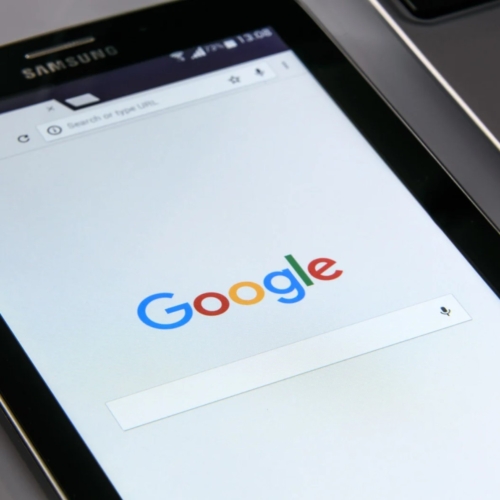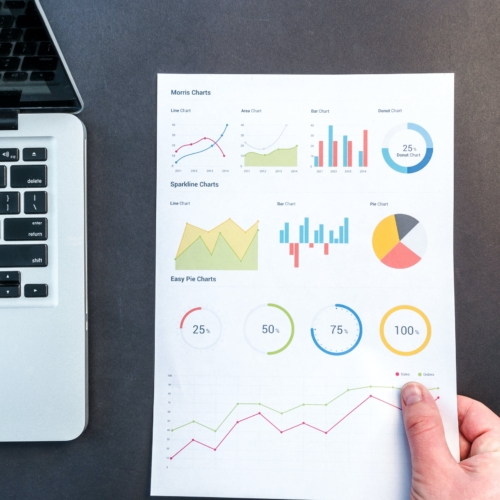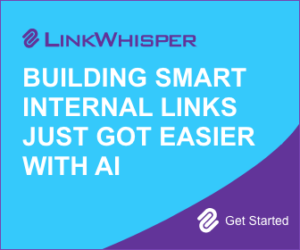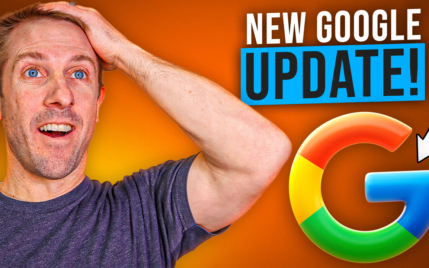CPC vs CPA: Which Drives More Value for Your Ad Budget?

When you buy something through one of the links on our site, we may earn an affiliate commission.
Welcome to my blog on CPC vs CPA.
You're probably here because you're wondering: what's the distinction?
In short, CPC (Cost Per Click) charges you for each ad click, while CPA (Cost Per Acquisition) costs you when a user completes a desired action like purchasing.
Understanding these models is crucial for efficient ad spending since every click translates into profit or cost!
Ready to take control of your advertising budget? Let's dive in!
Contents
Understanding The Key Differences Between CPC vs CPA
The main difference between CPC and CPA lies in the bidding strategy, i.e., what the advertiser is paying for.
In CPC, they pay for each click on their ad, regardless of what the user does after clicking.
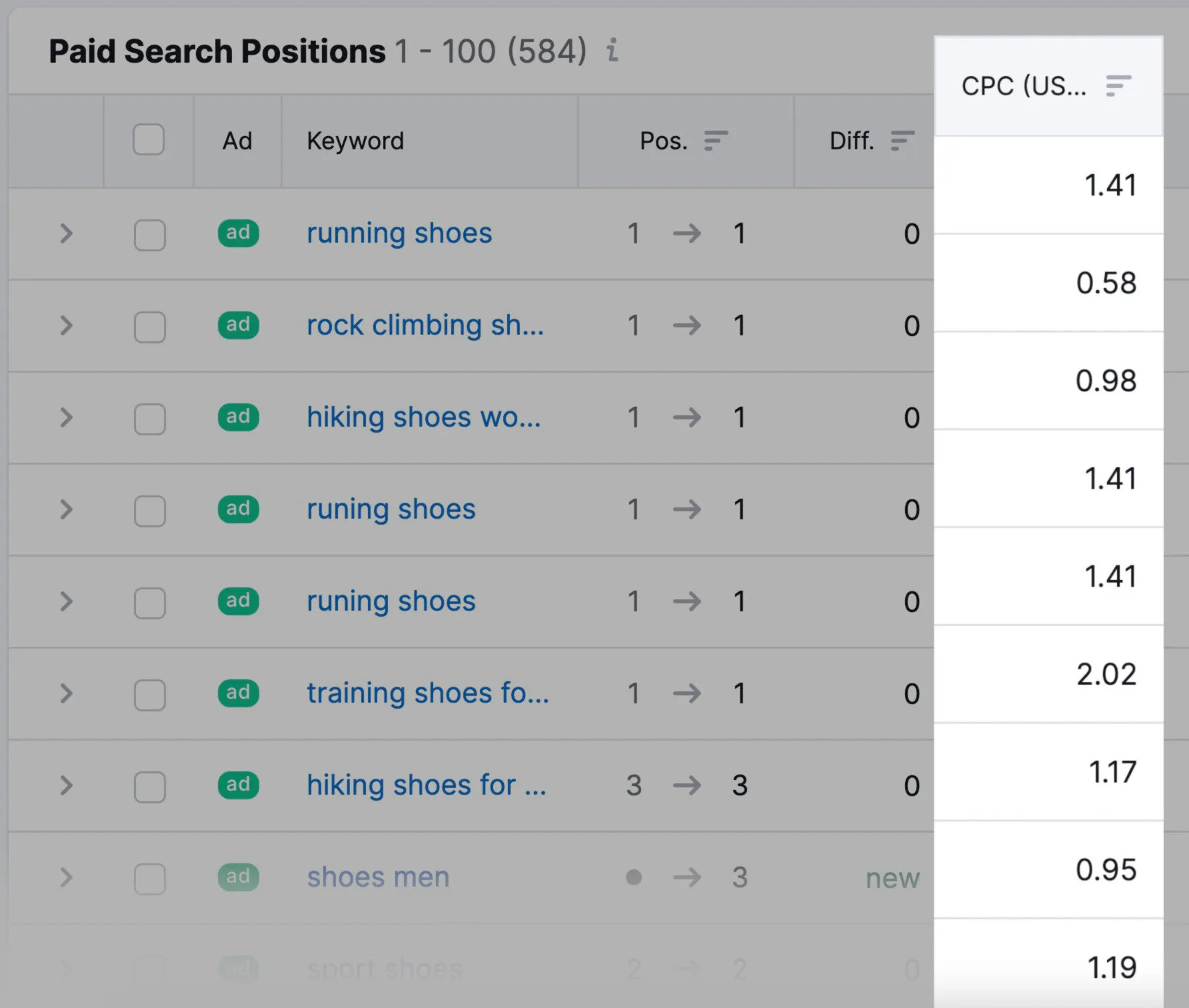
Businesses bid on keywords relevant to their products or services, and the cost per click varies depending on the keyword's competitiveness.
For instance, the average CPC across all industries is about $2, but the CPC can be much higher for highly competitive industries like legal services or insurance.
According to Ahrefs, keywords relating to "lawyer" have an average CPC of $6.75.
The CPC bidding strategy often benefits those running ad campaigns on platforms like Google Adwords, as they know exactly what their ad costs are - they pay no more than what they specify.
In CPA, they pay when the user completes a specific action, like making a purchase or filling out a form.
Usually, you'll set up the bidding structure as the beginning objective when you start your campaign.
Here's what it looks like for Google Ads:
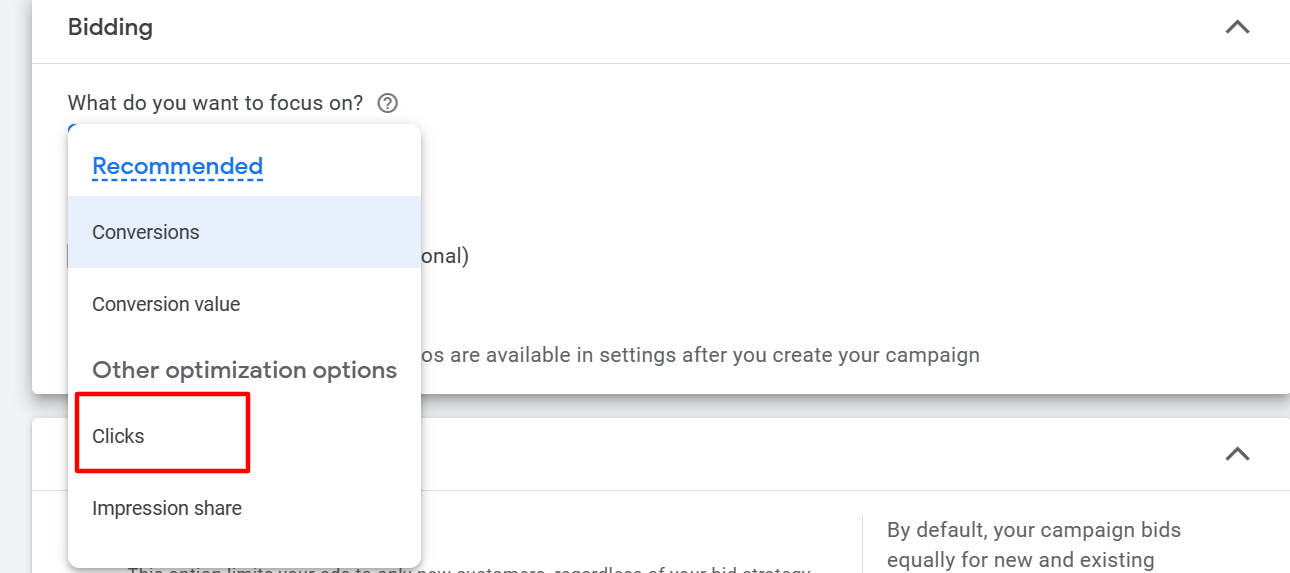
Alternatively, if you want to set up a CPA campaign, you can do so with the "Conversions" option.
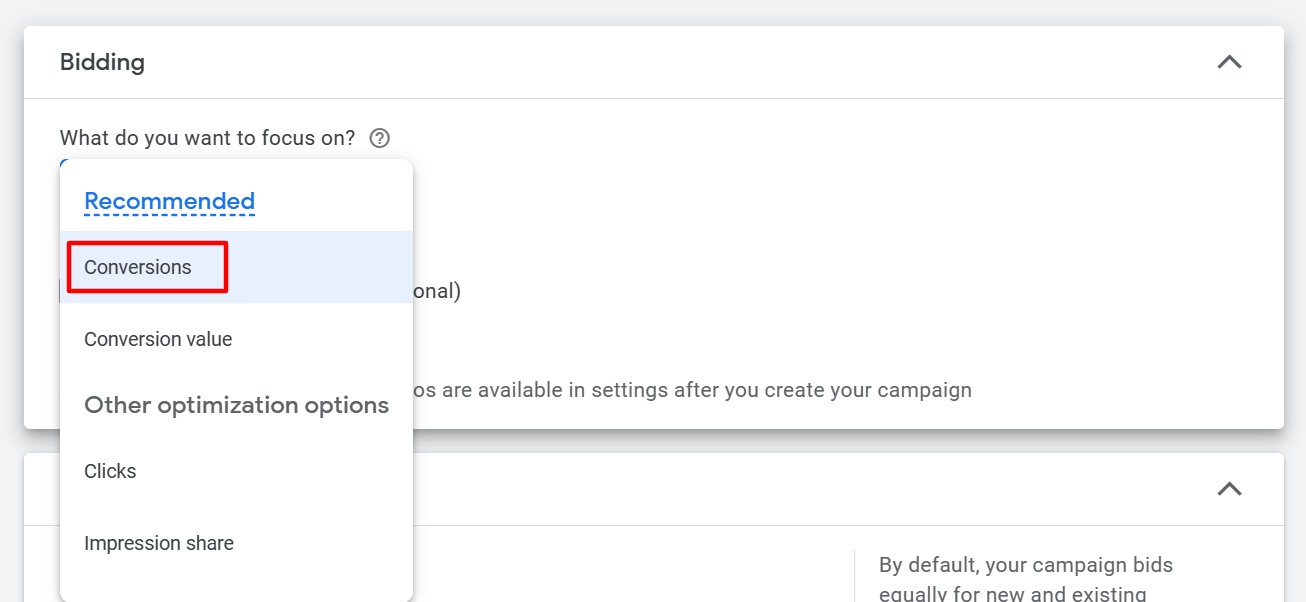
However, it's important to note that Google Ads also optimizes your bidding strategy based on your campaign goals.
For instance, if your goal is to increase website visits, Google Ads costs will automatically adjust your bids to help get as many clicks as possible within your budget.
Similarly, if your goal is to increase conversions, Google Ads will optimize your bids to help get the most conversions within your budget.
When to Use CPC vs CPA
Let's consider two hypothetical businesses: "Gadget World," a tech gadget store, and "EduLearn," an online learning platform.
Both businesses aim to increase their online presence and customer base, but they approach their advertising differently.
Gadget World chooses to run a Cost Per Click (CPC) campaign on Google Ads, bidding on keywords such as "latest tech gadgets" and "affordable gadgets."
This strategy aims to drive a significant amount of traffic to their website, increasing brand awareness and potential sales.
After analyzing the campaign, they find that the average CPC is $1.42, a cost they deem worthwhile for the exposure they're gaining.
CPC campaigns are often a best practice when launching a new product or campaign. They allow businesses to "purchase" data through clicks, which can provide valuable insights into their audience's demographics, interests, and behaviors.
This data can be instrumental in optimizing their campaign and setting the stage for successful Cost Per Action (CPA) campaigns in the future.
On the other hand, EduLearn decides to run a CPA campaign. Their strategy is different: they choose to pay for every user who signs up for a course after clicking on their ad.
This model works well for EduLearn as they directly pay for a tangible result - course sign-ups.
After the campaign, they find that the average CPA is $20, meaning they pay $20 for every new course enrollee.
CPA campaigns, like EduLearn's, focus on optimizing for conversions.
While this sounds ideal in theory (who wouldn't want to pay only for results?), it can present significant challenges if implemented without sufficient preparation.
CPA campaigns require a deep understanding of your audience and conversion rates. Without substantial data, predicting user behavior once they land on your site can be challenging.
There's a risk of paying for actions that don't align with your ultimate business goals or, worse, finding that users aren't taking any meaningful actions at all.
Additionally, if the CPA is set too low, the campaign might not spend at all, resulting in negligible traffic.
Comparing CPC vs CPA to Other Advertising Models
CPC and CPA are just two of the many advertising models available.
Others include Cost Per Mille (CPM), Cost Per Install (CPI), and Cost Per View (CPV).
| Advertising Model | Main Focus |
| CPC (Cost Per Click) | This model measures the average cost of ad clicks in a PPC (Pay-Per-Click) campaign. Focuses on the cost of clicks, so marketers only pay when a user clicks on the ad. To measure profitability, this cost is often compared against EPC. |
| CPA (Cost Per Acquisition) | This model focuses on the cost of conversions or actions, with payment only occurring when users complete a specific action like signing up for a newsletter or buying a product. |
| CPM (Cost Per Mille) | This is the amount of money an advertiser needs to pay for 1,000 impressions or views. CPM focuses on the cost of 1,000 ad impressions, regardless of whether users click or convert. |
| CPI (Cost Per Install) | This is the amount of money an advertiser needs to pay per mobile app install. CPI focuses on mobile user acquisition, and the average costs change substantially based on region. |
| CPV (Cost Per View) | A model where the advertiser pays for every unique user view on their video ad. Primarily used in video marketing, where the main goal is getting the video viewed by as many people as possible. |
YouTube, for instance, uses a CPV model where advertisers pay when a user watches their video ad. This model is particularly effective for brands that rely heavily on video content to engage their audience.
Mobile app developers often use the CPI model, paying when users install their app. This model benefits developers looking to increase their user base, as they only pay when a user installs their app.
The Interplay Between CPM, CPA, and CPC
CPM, CPC, and CPA are all linked together by two key metrics:
- Click-through rate (CTR)
- And conversion rate
CTR is the link between CPM and CPC, calculated as the total number of people who click an ad divided by the total number of people who view the ad.
Conversely, the conversion rate links CPC to CPA and is calculated as the total number of people who take action divided by the total number of people who click.
Let's imagine a new online bookstore, "Book Haven." They use banner ads to drive traffic to their website and a contact form for potential customers to sign up for their newsletter.
Book Haven's ads have a click-through rate of 2%, and 5% of people who click on the ad fill out the contact form (the "action" in this case).
That means every 1,000 impressions would result in 20 clicks (1,000 impressions x 2% CTR), and those 20 clicks would result in 1 lead (20 clicks x 5% conversion rate).
Optimizing for CPC vs CPA
While optimizing for Cost Per Click (CPC) and Cost Per Acquisition (CPA) may seem like separate strategies, they intersect at the point of ad relevance and Quality Score.
Improving Ad Relevance and Quality Score
In Google Ads, an auction is run to determine which ad will appear when an ad space becomes available. The winner isn't just the highest bidder - Google also considers ad quality and relevance.
Google uses Quality Score to measure how relevant and useful your ad is to the user based on your ad's CTR, relevance, and landing page quality.
A higher Quality Score can lead to lower costs and better ad positions.
So how do you improve it?

Relevance of Keywords: Start by making sure your ads and landing pages are relevant to the keywords you're bidding on. Use your keywords in your ad text to show users that your ad is directly related to what they're searching for. Don’t use a uniform ad for each keyword you’re bidding on!
Dynamic Keyword Insertion: This feature in Google Ads automatically updates your ad text to include keywords that match a customer's search terms. This makes your ads more relevant and can improve your click-through rate. It sparks the connection with potential customers - you’re speaking their language, addressing their specific needs.
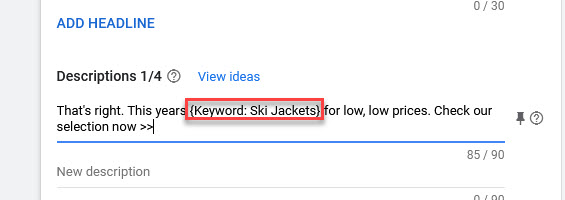
Dynamic Landing Pages: Dynamic landing pages can change based on the keywords used in a search query. This means that the landing page's content is more relevant to the user's search, which can improve your Quality Score and increase conversions.
Use Geographic Targeting: If your business serves specific locations, use geographic targeting to show your ads to people in those areas. You can also use location-specific keywords in your ads and landing pages to make them more relevant to local searchers.
Optimized Images and Mobile Carousels: Ensure your images are optimized so they show up correctly on different screen sizes and don't hurt your page load speed.
Also, consider having an image carousel on both desktop and mobile that includes thumbnails for each image.
Analyzing Your Data and Optimizing
One of the most effective ways to lower your costs is to analyze your data and identify where your money is being made - and where it's being lost.
Start by looking at your keywords. Which ones are driving conversions? Which keywords are not performing?
You might find that a few high-cost keywords eat up a large portion of your budget but do not drive many conversions.
In this case, pausing these keywords and reallocating your budget to those driving results might be worthwhile.
Next, look at your conversion data. Are certain times of day, days of the week, or geographic locations driving more conversions?
Use this information to adjust your ad scheduling and targeting settings, focusing your budget on the times and locations that are most likely to convert.
Embracing Automation with Smart Bidding
While manual optimization gives you a granular level of control, it can be labor-intensive.
This is where Google's Smart Bidding comes into play.
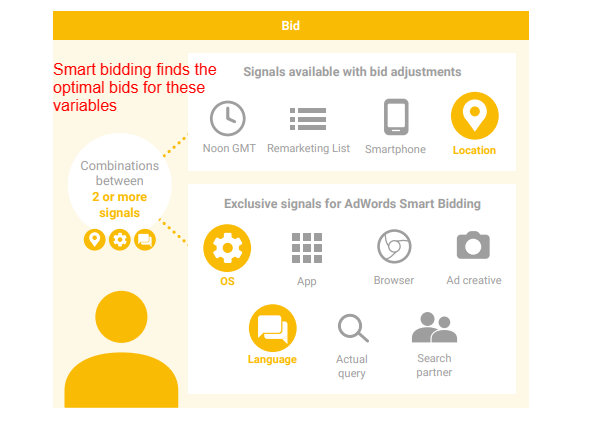
Smart Bidding is an automated bidding strategy that uses machine learning to optimize for conversions or conversion value in each and every auction—a feature known as “auction-time bidding.”
It tailors your bids to maximize conversions and takes much of the heavy lifting off your shoulders.
Plus, because it's powered by machine learning, Smart Bidding can make more accurate predictions about how different bid amounts might impact conversions or conversion value.
Transitioning to Target CPA
Once you have enough conversion data, I recommend testing the target CPA bidding strategy.
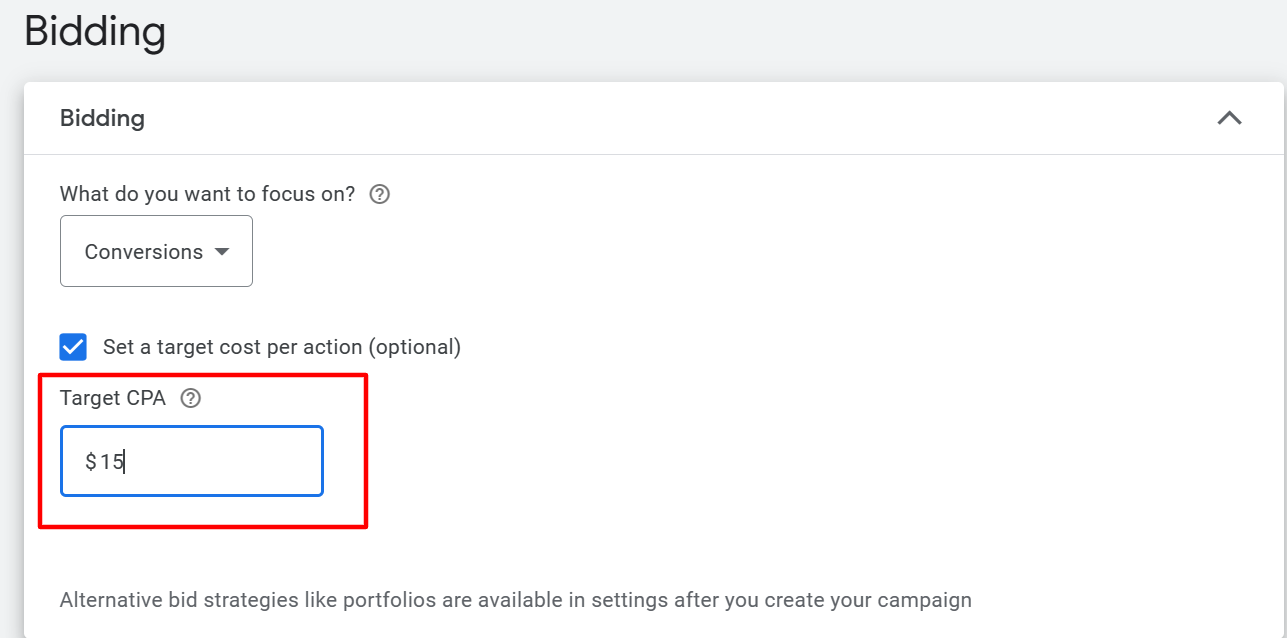
This is a Google Ads Smart Bidding strategy that sets bids to help get as many conversions as possible at or below the target cost-per-action (CPA) you set.
Here are some things you should have before you switch to Target CPA:
- A Clear Understanding of Your Conversion Rates: You should know what percentage of clicks on your ad result in a conversion. This will help you set a realistic Target CPA.
- Enough Conversion Data: Google recommends that you have at least 30 conversions in the past 30 days before switching to Target CPA.
- A Defined Conversion Action: You should know exactly what action you want users to take from your ad, whether it's making a purchase, signing up for a newsletter, or filling out a form.
Conclusion - CPC vs CPA
That wraps up our article on CPC vs CPA.
Remember, they're not mutually exclusive but offer different insights: CPC for traffic and CPA for the most cost-effective conversions.
Your campaign goals will guide your choice!
P.S. If you're intrigued by the potential of CPA marketing and wish to delve deeper into its strategies, we have a dedicated article just for you! Alternatively, if you're interested in discovering the best CPA networks, we've got you covered with another insightful read.
Want to learn step-by-step how I built my Niche Site Empire up to a full-time income?
Yes! I Love to Learn
Learn How I Built My Niche Site Empire to a Full-time Income
- How to Pick the Right Keywords at the START, and avoid the losers
- How to Scale and Outsource 90% of the Work, Allowing Your Empire to GROW Without You
- How to Build a Site That Gets REAL TRAFFIC FROM GOOGLE (every. single. day.)
- Subscribe to the Niche Pursuits Newsletter delivered with value 3X per week
My top recommendations


